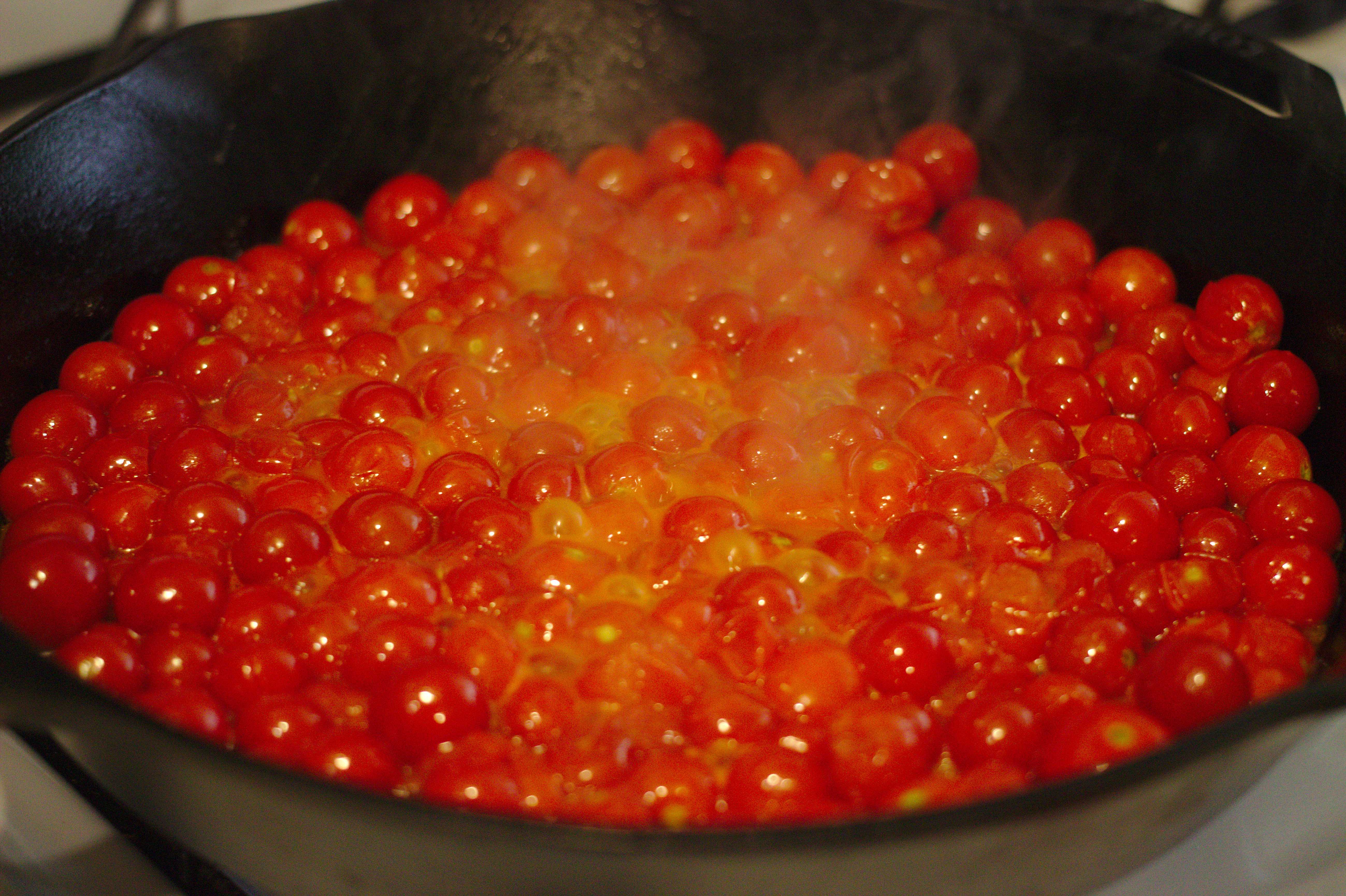Pasta with garden tomatoes

Enough pasta and tomato sauce recipes have influenced this simple recipe that I’m willing to call it my own - though let’s not confuse that with calling it “unique.”
Every week or two in June, July, and August, there are 2-4 lbs of tomoatoes to pick and eat in the garden I started during the summer of 2020. This recipe was built as a way to use up the tomatoes without too much time or effort needed. It’s quick enough that it could be made for lunch.
Ingredients
- Olive oil
- Fresh cherry tomatoes (~2 lbs in photos)
- Kosher salt
- Garlic, sliced (~3 cloves)
- Freshly ground black pepper
- Fresh basil (8-12 leaves plus more for garnish)
- Pasta for 1-4 people (I prefer tubes)
- Parmesan cheese for garnish

Recipe
- Get your pasta cooking until just short of al dente. Kenji has a great Serious Eats article on the myths behind cooking pasta. TL;DR You can heat your pasta and water at the same time as long as it’s (a) not fresh made and (b) not long (ex. spaghetti). I prefer this recipe with boxed penne or rigatoni so I’m in the clear.
- Place a cast iron skillet or dutch oven on medium to high heat. While heating, wash and dry the tomatoes and pick the stems, peel and thinly slice the garlic cloves, and chiffonade the basil.

- Add enough olive oil to the hot pan to create a thin layer and immediately add the tomatoes. Reduce the temperature slightly and add kosher salt. Be careful of hot oil splattering and feel free to cover the tomatoes for a bit if the oil is making a mess outside of the pan. The tomatoes should start to burst after about five minutes. Encourage them a bit by pressing on them with the back of a wooden spoon or spatula. Let them continue to cook for about five minutes more or until a sauce is formed (see images below for reference).

|

|
- Once the tomatoes have mostly broken down, add the garlic, black pepper, and basil. Also add a tablespoon or two of the pasta cooking water.
The starches will help thicken your sauce. Allow the sauce mixture to simmer for 5-10 minutes at a low heat, stirring occasionally so the
contents near the bottom of the pan don’t burn or stick.
- If sticking occurs, add some pasta water in that area and scrape up the sticking bits.
- The garlic is added in this step so that it gently boils to make soft, plump garlic nuggets.
- If you haven’t already, drain your pasta and add the tomato sauce to the pasta until you have the ratio you prefer. Make sure the sauce is still hot so the pasta will cook through the final step to al dente. Allow any extra sauce to cool before storing. Plate the pasta+sauce and top with fresh basil, black pepper, and parmesan cheese.
